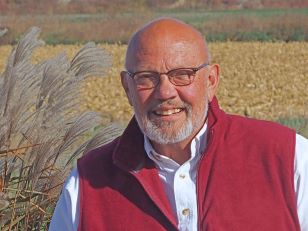
He was, in a way, both a large part and a small part of the Allied Invasion of Normandy, June 6, 1944–a small part because that day he was just one of Gen. Omar Bradley’s First Army, 73,000 Americans among hundreds of thousands of Allied troops to assault occupied Europe. In sheer scale of operation, his death that day was incidental, but the role he played was immense because he was one of thousands who knew that when they’d cast off from England’s shore, some–quite likely many–would not be coming back. They knew. They had to. The cost of freedom must have been written starkly on their faces that rainy morning.
They knew, but they went anyway. That’s a huge role.
He was just one of thousands of casualties, but he was, nevertheless, a man with a story, just like each of them were. Family lore says he stepped off one of those landing crafts, the one to which he’d been assigned, and just like that took a Nazi bullet. I don’t know that he’d served elsewhere in the war, don’t know what his role was, or how long he’d been in the service–“PVT 112 ENGR,” his stone says, and then, a line below, “COMBAT BN,” all upper case. Date of death: June 6, 1944.
His job was to destroy beach impediments, probably with explosives. The beach?–Omaha, scene of perhaps the heaviest casualties. Military history says his landing craft was one of the first.
That’s all we know.
Nor do I know what kind of horrifying impact his death had on the woman he left behind, the woman who would become my mother-in-law. I can imagine, but I don’t know.
Three years after he was killed on Omaha Beach, two years after the war ended, she put her life back together and married my father-in-law, another vet, a man whose mechanical skills had been put to good use in the motor pool, where he repaired tanks and jeeps and armored vehicles behind the Allied front on the long liberating trek to Berlin.
She married my father-in-law and life continued, as it does. The name Gerrit Ter Horst was rarely spoken.
Little flags waved in the prairie wind all over the Orange City cemetery on Monday, Memorial Day, marking the graves of veterans galore. Some stones have summaries, but most list nothing at all, only a flat American Legion medal that describes what can be inferred from the dates carved into granite–“World War I,” “World War II,” “Vietnam.”
The marker for Gerrit Ter Horst sits in a little covey of white stones, a couple of dozen other vets, including my father-in-law’s brother, Charles Van Gelder, a young man who, sometime during his military training overseas, was a drowning victim before he ever came near a battlefield.
I don’t know how the Ter Horst family talks about their ancestor’s death, or whether they do at all. I hope they do, because there has to be more to his story than a young woman, in tears, anxiously turning a diamond ring on her finger back home, a gift from a man who will not return. Here, in Orange City, Iowa, she didn’t talk about his death, never mentioned it to me at all. Some deep heartaches simply have to be put to rest.
On Sunday night, we discovered flowers on Uncle Charles’ gravestone. Someone had remembered. Someone hadn’t forgotten. It was a joy to find them there.
That there were no flowers on Gerrit Ter Horst’s cemetery stone doesn’t mean he’s been forgotten. The night before Memorial Day we remembered, in hushed silence, that once upon a time, June 6, 1944, a man once engaged to be married to a woman very precious to us was killed on a beach in Normandy. He left a sweetheart, and died a hero for all of us, family or not.
The morning sky on Memorial Day seemed a perfect portrait–cloudy, a soft red band stretching across half the horizon north, an almost heavenly red badge of courage. When I stepped out at dawn, a light rain was falling gently, as if the whole world outside my door, a world Charles and Gerrit must have missed terribly, was remembering, a whole world that tearfully hadn’t forgotten.




